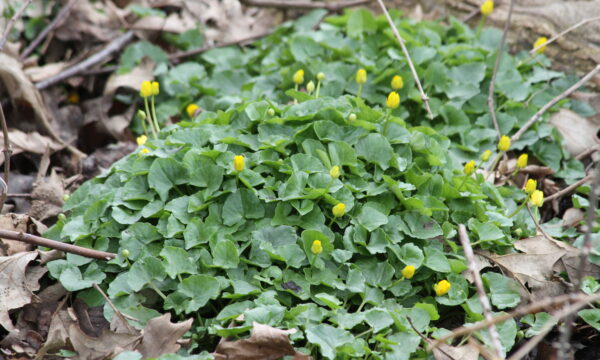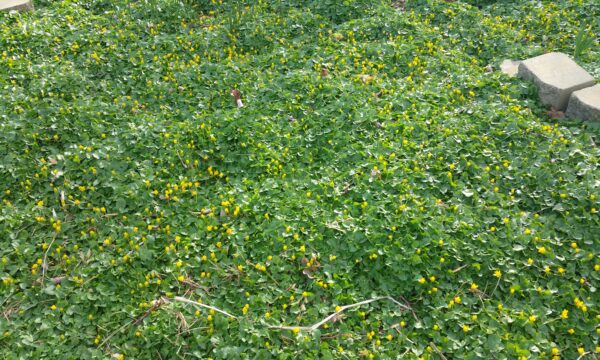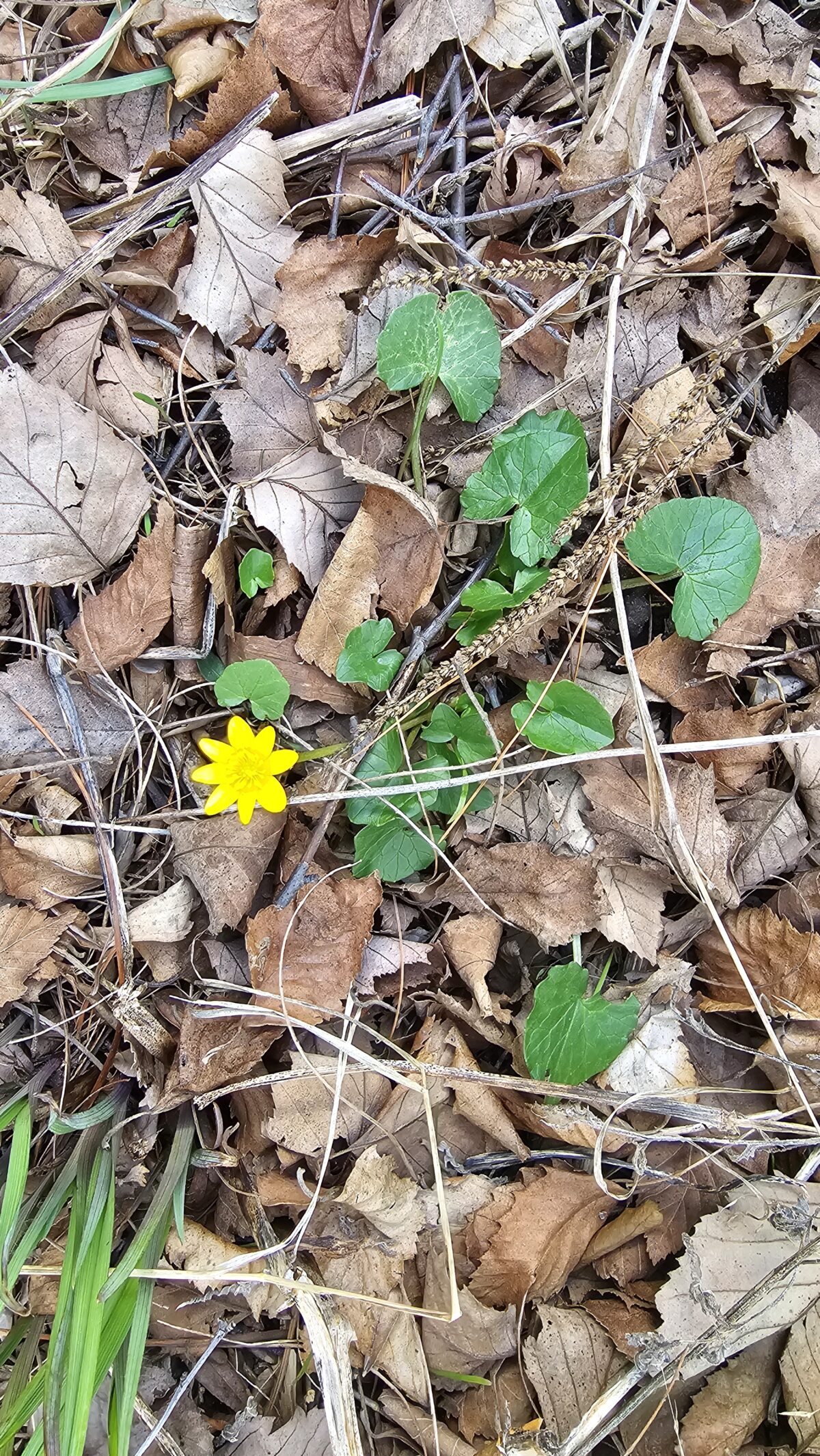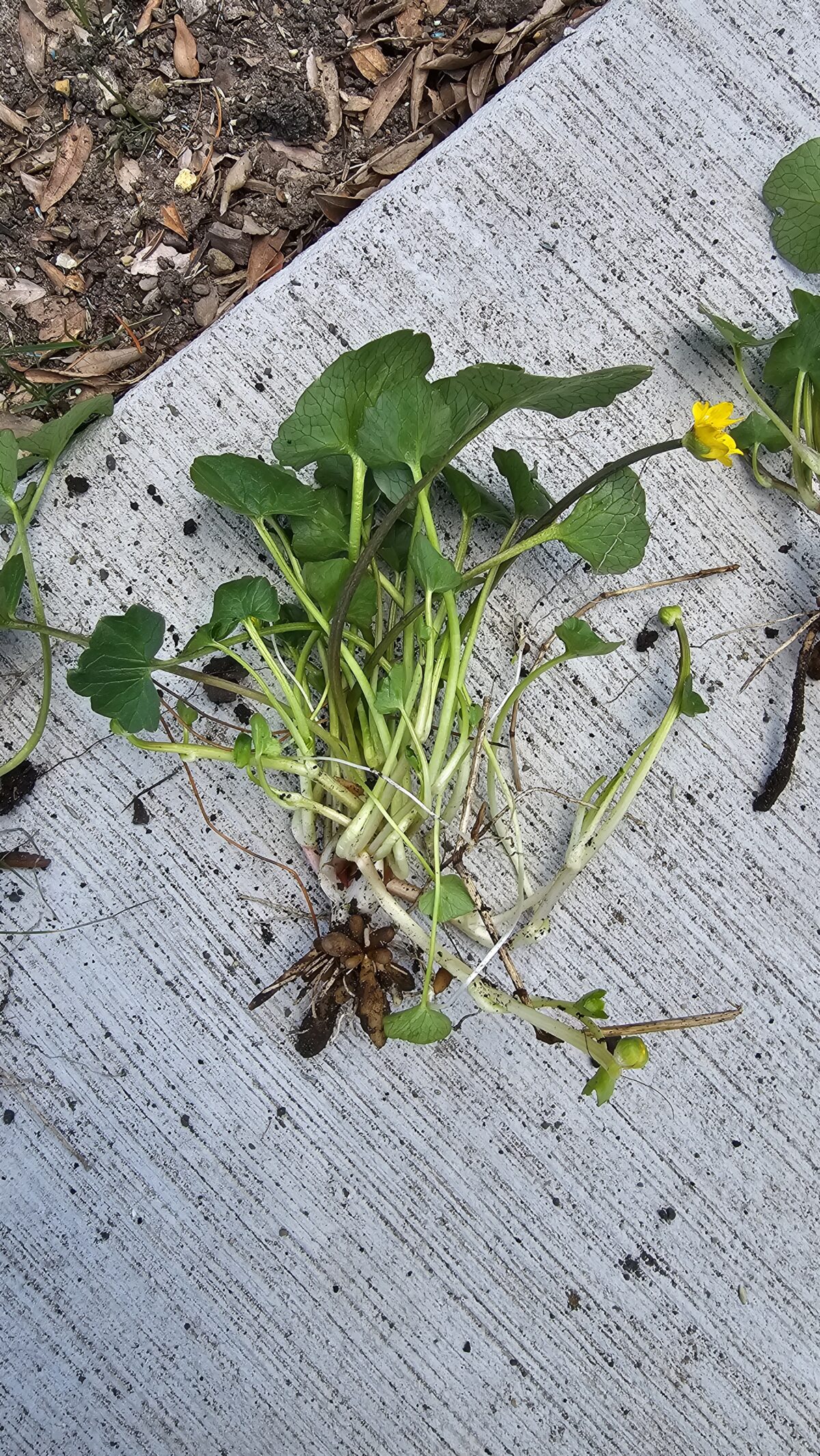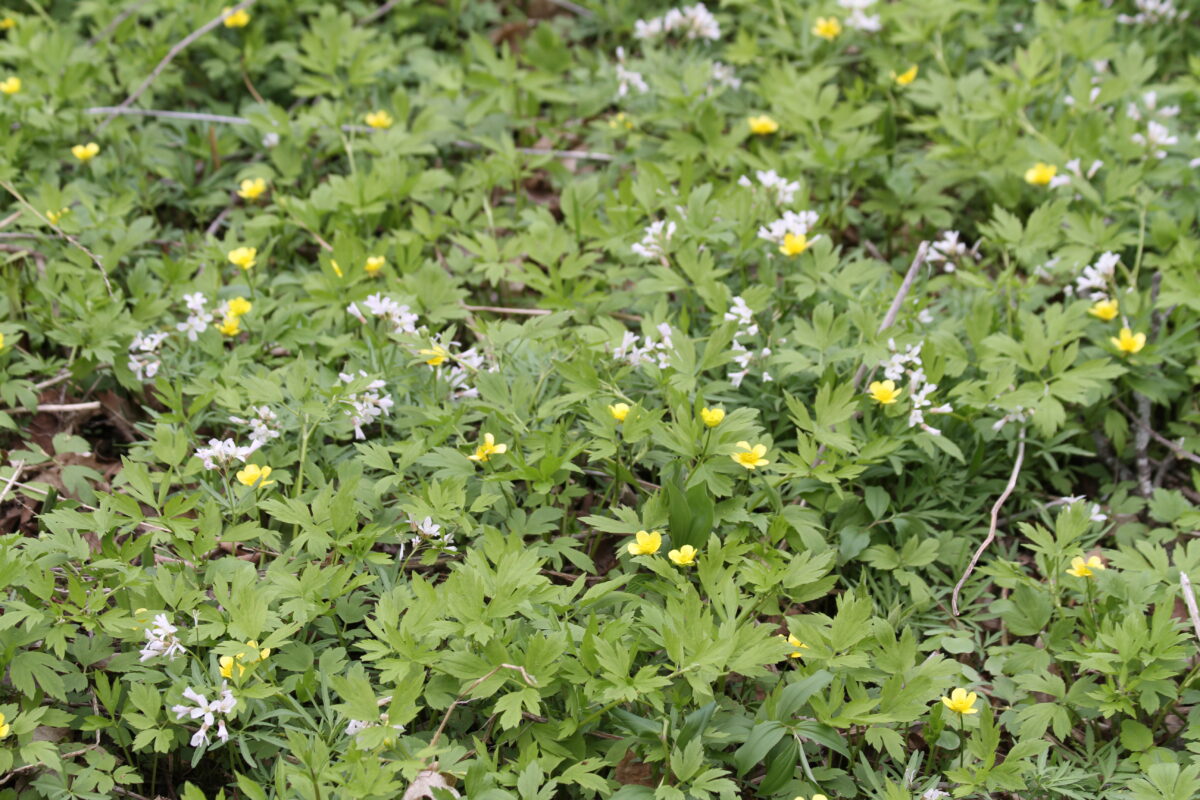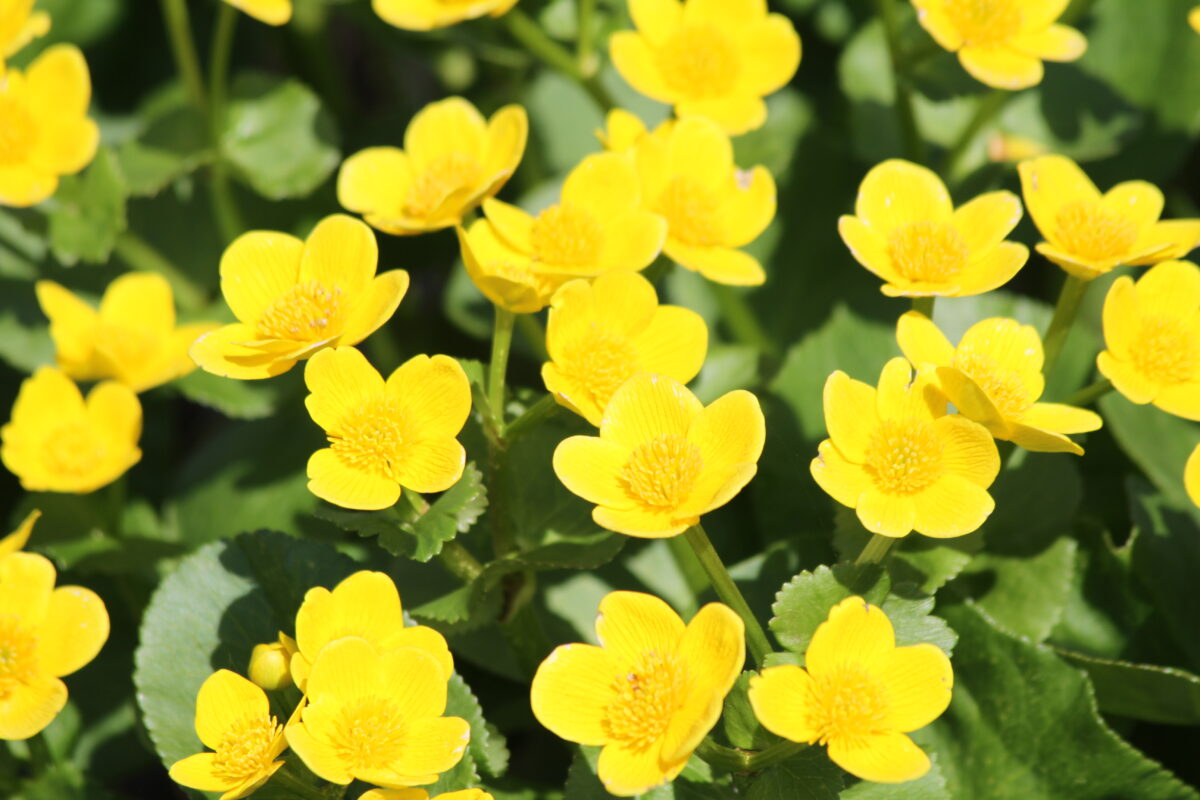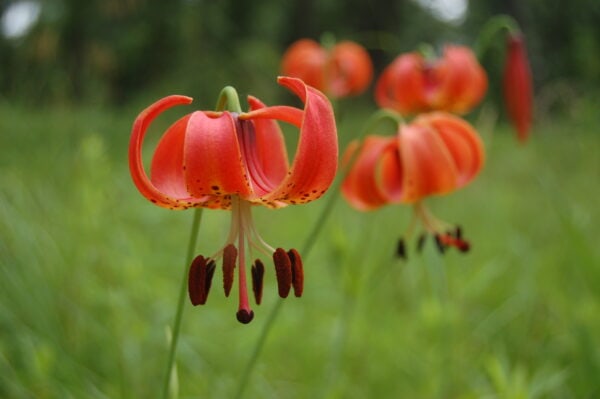
Megan Sprovach
Tallgrass Restoration, Crew Leader
In the early spring, you may be walking along rivers and streams and notice a stunning display of yellow and green. While this carpet of flowers may be beautiful, it has a more sinister side, replacing all other spring wildflowers along the riverbanks. This is lesser celandine, also known as fig buttercup, and it has become a serious pest in our native landscapes.
What is Lesser Celandine?
Lesser celandine is an aggressive perennial related to buttercups that grows in wet areas, such as streambanks and near roadside ditches. It has dark green, heart-shaped leaves with slightly wavy margins. The flowers are bright yellow and glossy with 7-12 petals. The mats that it forms are so dense that native wildflowers struggle to survive in them.
Where Did it Come From?
Lesser celandine is native to Europe, Asia, and northern Africa. A relatively new invader, it was brought to the United States as an ornamental plant in the 1800’s, escaping gardens by 1867.
What is its Life Cycle?
Lesser celandine leaves can emerge as early as late winter, and it is one of the first of the spring ephemerals to produce flowers. While the flowers can produce seeds like any other plant, celandine is more commonly spread via other means. The roots produce dense clusters of tubers that can break from the rest of the plant and produce new individuals. The bases of the leaves often produce small, finger-like protrusions called bulbils that can also sprout into clones. These bulbils are easily carried away by animals and floodwater. By the summer, the celandine goes dormant and disappears until the next year.
How Can You Control it?
Celandine can be difficult to eradicate from gardens, especially for large populations. If you have small clumps of celandine, these can be treated by digging up the plants. However, you must make sure that you remove the entire plant, including all tubers and bulbils.
Larger populations will require herbicide to make a dent. The key to using this method is to start early. Spraying the celandine before it flowers will minimize damage to other plants that have yet to emerge, but it can still be effective when up to half of the celandine is flowering. Keep in mind that the plants do die back in the summer, regardless of whether herbicide treatment was effective or not. You will likely need to repeat these treatments over several years to effectively treat heavy infestations.
The most commonly recommended herbicide for controlling celandine is glyphosate. Since celandine is often found in wet areas, it is best to use an aquatic-safe formula. Research is ongoing to find other effective herbicides and aminopyralid based herbicides are showing positive control results.
What Can You Plant Instead?
Luckily there are several closely-related native wildflowers that can take celandine’s place if you like it’s vivid spring colors. There are several species of native buttercup (Ranunculus) species that may be available from local native nurseries such as swamp buttercup (Ranunculus septentrionalis) which grows well in wetter woodland soil, and early buttercup (R. fascicularis) which grows well in sunnier, well-drained soils. A close lookalike to lesser celandine is marsh marigold (Caltha palustris), which also grows well in wet, shaded soils, but has much larger flowers and leaves. All of these native lookalikes, for the most part, have flowers with fewer petals than lesser celandine, but are just as vivid yellow.
For More Information on Lesser Celandine:
Lesser Celandine (Ranunculus ficaria) (illinoiswildflowers.info)
Fig Buttercup | National Invasive Species Information Center
Lesser Celandine: A Beautiful Plant with an Ugly Nature | BYGL (osu.edu)
Don’t be Deceived by This Beguiling Springtime Plant (psu.edu)

